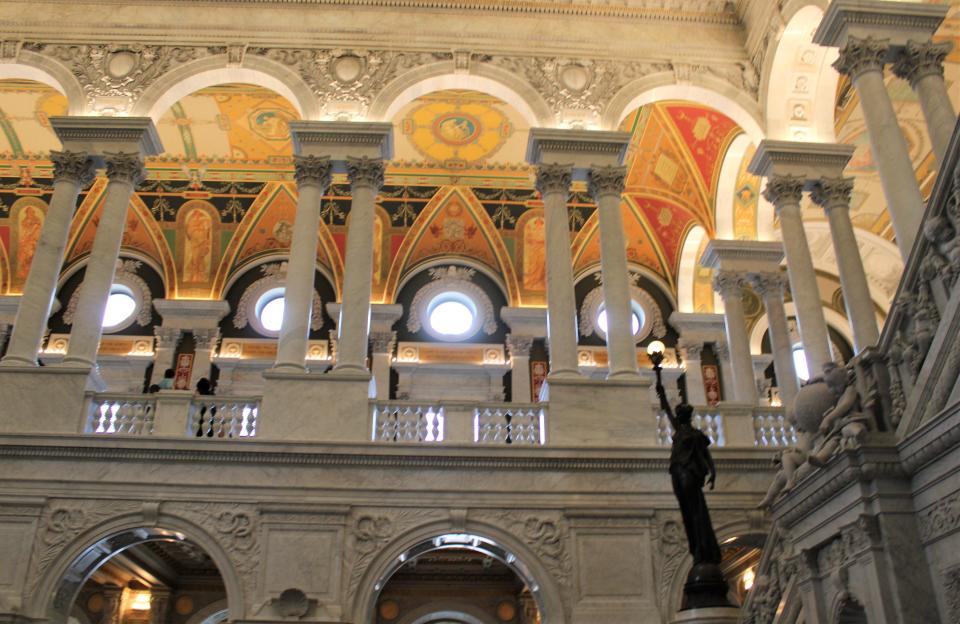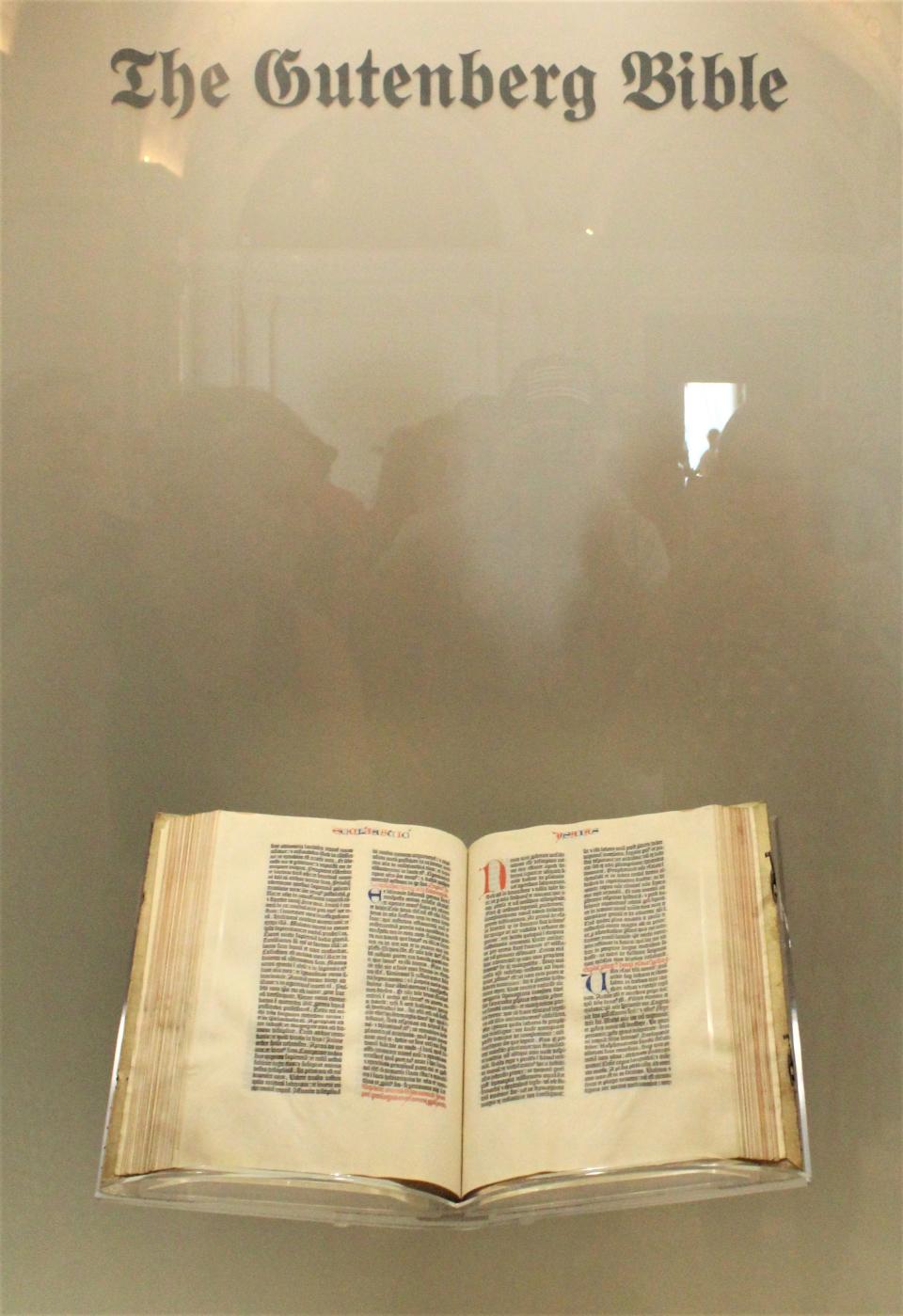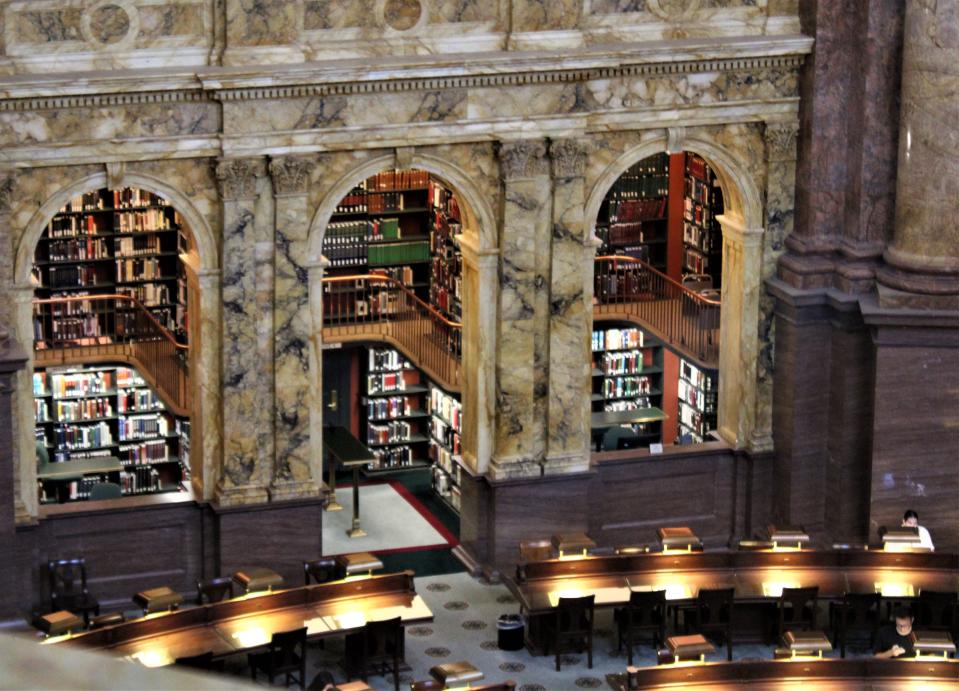Library of Congress in Washington D.C. a treasure trove of history
- Oops!Something went wrong.Please try again later.
Since Laureen and I had just wandered the halls of Congress, it was time to saunter over to the Library of Congress.
Well, in truth, it was hot and sweltering outside by this time of day and I wanted to stay away from being hot and sweltering.
When our tour guide, Rosemary, had said goodbye, she went her way and we were supposed to go our way.
“I know,” I said. “Why not go back to the tunnels and turn left toward the Library of Congress.”
Laureen shook her head. “We are supposed to turn in our visitor stickers and exit like all other tourists. We can enter like everyone else, besides, our timed tickets are not scheduled for another four hours.”

Make sure you get your timed tickets to visit Library of Congress
Timed tickets. Those bloody pieces of paper or scannable app on your phone indicating the time you are allowed to enter a public building as a guest.
I fully understood such a measure. Washington D.C. gets a whole lot of visitors and all of those same visitors would not be able to enter the museums, historic sites, and the like at the same time since every exhibit would be overly crowded.
“Excuse me,” one guest may say to another guest. “I’m trying to peek at the Declaration of Independence but all I am seeing is your right armpit. But, I must say that Old Spice After Hours Deodorant is quite refreshing.”
The Library is one of the largest in the world. It contains over 173 million items and has more than 3,000 employees.
I understand that one of the ways the federal government can retain so many employees is the fact that the late fees for checked out books is very high.
An interesting tidbit concerning the library: ‘the library's collections are universal, not limited by subject, format, or national boundary, and include research materials from all parts of the world and in more than 470 languages.’
Well, that is 469 languages that I do not speak. I was duly impressed.
The Library was founded in 1800 and is considered one of our oldest cultural institutions. I suppose because it has stuff from around the world in a bunch of languages.
During the War of 1812, the British invaded Washington D. C. and burned down a large swath of the town, including the library, and thus destroying most of the inventory housed there.
What treasures must have been lost? Indescribable, like the burning of the library of Alexandria in 48 BC by the Romans.
In an effort to rebuild and replenish this loss, Congress authorized the purchase of the entire 6,487 book collection that made up Thomas Jefferson’s personal reading material. That stocked some shelves.
Jefferson was once heard complaining to his wife, Martha, “What am I supposed to read before bed now?”
As all libraries eventually do, the collection of valuable documents and books continued to grow.
But in 1851 another fire erupted and burnt most of the library's contents, including a major part of Jefferson’s books.

The head librarian asked the city if perhaps a fire hydrant should be installed outside, just in case.
We walked through the tunnel toward the Library of Congress and sure enough, there was an employee scanning the timed tickets for guests.
“Told you so,” Laureen said. “Now we will have to go all the way back and wait until our proper time of entrance.”
I nodded, but went ahead and let the gatekeeper scan my phone.
“I’m sorry,” she said. “But you are not allowed in for another three hours and forty-five minutes.”
“Oh,” I replied. “We are on Nauru time and forgot to change our watches.”
“What?”
“A small island country northeast of Australia,” I said. “Surely you have heard of it, white sandy beaches surrounded by a beautifully clear blue ocean.”
“Enjoy your visit.” And the gates were opened.
The Library of Congress is so huge that it takes in three separate buildings on Capitol Hill; the Thomas Jefferson Building, the John Adams Building, and the James Madison Memorial Building.
With limited time, it was Jefferson for us.

As we entered the great hall designed in the Italian Renaissance fashion - I’m actually getting familiar with this architecture - the thing that struck us was the grandeur of the institution. A pair of huge winding marble staircases encircling the main lobby leading to galleries on separate floors with humongous sculptured marble columns seemingly holding the entire structure secure.
It was one of the most beautiful buildings we had visited in our nation’s capital.
It is understandable that this building hosts many hoity-toity events throughout the year. It was like walking into a billionaire's stately mansion. Grand staircases, tall ceilings, ornate paintings, statues, and all that was missing was a butler clad in black, escorting me out of the residence.
“Elon has no time for you,” the butler may say to me.
See breathtaking architecture at Library of Congress
The domed ceiling towering 75 feet above the great hall in the entrance, is an exquisite masterpiece of art surrounded by statues of some of the most intellectual thinkers of the time: Emerson, Franklin, and Scott to name a few. There are also more historical names inscribed high above the marble floors like: Dante, Homer, Shakespeare, Moses, and so many more.
Dead center below the dome is a beautifully crafted compass rose in the marble floor. Around it are the signs of the Zodiac.
Not the raft. The astrological symbol.
Close by is an arch the visitor walks beneath and instantly sees the glass encased Gutenberg Bible. The first book ever printed on a movable type printer from Western Europe in the 1450s.
Only 48 are known to exist and only 12 which were ever printed on vellum. We were staring at one of the 12.
It was awe inspiring.

For any person entering the library, a sense of being at the site of knowledge is immediate.
This is a world to explore - a researcher's dream.
If given the time, I would have loved to visit the main reading room, which can be seen from the mezzanine. Row upon row of desks encircling a huge room where scholars, researchers, students, and the general public are allowed, upon prior permission, and can view countless volumes of some of the most important items in print anywhere in the world.
Laureen looked at me. “You’d like to be done there with your nose in a book, wouldn’t you?”
I only smiled. She knows me well.
Walking the library, the tourist will encounter the collection from Thomas Jefferson’s personal library, art works from masters, letters from distinguished world leaders, famous cartoons depicting political humor as well as just everyday events, and so much more. Each gallery is as great as the last one traveled through.
But, there was an area I found intriguing that was full of photographs of important events during America’s growth.
A person can find the likes of Ansel Adams sharing photos from the Internment Camp at Manzanar, a collection of African-American photos from the 1900 Paris Exposition, Civil War photos from Matthew Brady, and one taken during the Great Depression from photographer Dorothea Lange.
It is of a young mother, Florence Owens Thompson, who is seen sitting dejectedly on a simple wooden porch surrounded by her children in 1936. A woman who appears older than her actual age from the trauma she has had to deal with during those most trying times following the downfall of America’s financial might.
It depicts the desperation of a parent wanting the best for their children. A parent is simply a parent.
Laureen and I studied her face in the photograph. As parents, we could not imagine what it must have been like to wonder if there would be enough food on the table to take care of your children.
No parent wants to go through that misery.
That iconic black and white photograph is one of the most reproduced photographs in history, world-wide.
That photograph moved me the most in the entire Jefferson library.
“And we complain if there is a line at Costco for gas,” I said.
A walk through this library is a walk through American history.
A visit to Library of Congress will enlighten you
It is beautiful. But each gallery can enlighten the individual about the struggles this marvelous country has gone through during its growing period in a variety of mediums and always prevailed.
What we saw of the Library of Congress in this Jefferson building, showed what it is to be an American.
Be that good times, bad times, or just what the heck is happening times, anything is possible when working together.
For more information: https://www.loc.gov/about/general-information/
John can be contacted at, beyersbyways@gmail.com
The library's primary mission is to research inquiries made by members of Congress, which is carried out through the Congressional Research Service. It also houses and oversees the United States Copyright Office. The library is open to the public for research, although only high-ranking government officials and library employees may check out books and materials.
This article originally appeared on Visalia Times-Delta: Visit the Library of Congress for a treasure trove of history

